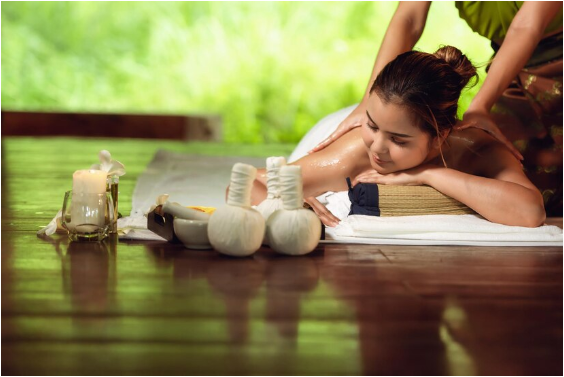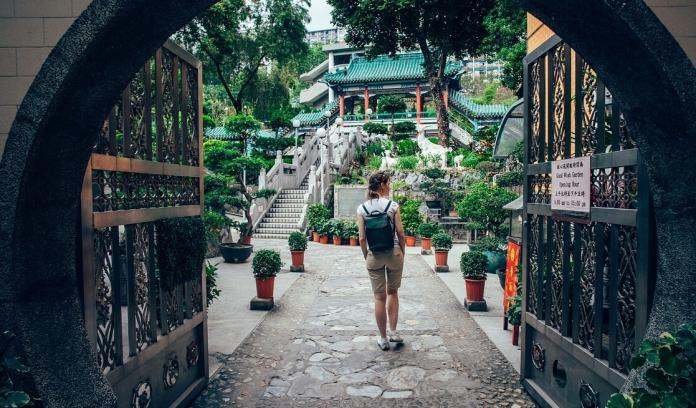In the bustling streets of Bangkok, within the quiet sanctuaries of Chiang Mai, and scattered across the serene beaches of Phuket, among the aromatic scents of lemongrass and the gentle hums of tranquility, something echoes through the air. It’s the art of healing, passed down through generations and etched into the very fabric of Thailand’s cultural heritage – Thai Massage. This timeless tradition of therapeutic touch has transcended borders, finding devotees at spas, retreat centers, and massage schools worldwide.
The Cultural Crossroads of Bodywork
At its essence, Thai massage is a holistic therapy where the practitioner uses a sequence of movements that emulates the rhythm of ocean waves – flowing, ebbing, and circulating energy. It’s more than a mere rub and stretch; it’s a sacred dance, a communion of mind, body, and spirit. This is not to be confused with Swedish or Aromatherapy massage; Thai massage has distinct techniques that focus on energy flow and the body’s acupressure points.
Rooted in Ayurvedic practices and incorporating elements of traditional Chinese medicine, this venerable art is a testament to the multicultural influences that have shaped Thailand. It’s no wonder that a practice so steeped in history and spirituality would capture the imaginations of those seeking a deeper connection to their well-being. Complete the Thai Massage Course Online to learn more.
The Global Rise of Thai Massage
The allure of Thai massage is undeniable. It’s a full-body experience, one where you’re moved into different positions, stretched and compressed to relieve physical tension and improve overall vitality. But how did this centuries-old practice become a global phenomenon?
A Movement of Mindfulness
In the modern era’s rush and clamor, there’s a growing movement towards mindfulness and holistic health. Thai massage offers an escape from the daily grind, providing a moment to slow down and center oneself. With wellness becoming a mainstream preoccupation, Thai massage emerged as an experiential bridge, connecting the quest for inner peace with tangible techniques.
A Bridge to the East
The increased interest in Eastern philosophies and alternative therapies has sparked a curiosity in the West toward practices like yoga, meditation, and, of course, Thai massage. Reflecting a broader shift in values, people are turning to these ancient arts not just for physical relief but for a deeper understanding of self.
The Education of Practitioners
Thai massage schools have multiplied, offering traditional training to aspirants from around the globe. The rigorous instruction, often paired with a cultural immersion experience, provides a solid foundation for those who wish to carry the torch of Thai massage to their communities.
The Synergy with Wellness Tourism
Wellness tourism is on the rise, and destinations that offer authentic holistic experiences often become magnets for travelers in search of rejuvenation. Thai massage fits perfectly into this landscape, with dedicated retreats and resorts incorporating it into their wellness packages.
The Attraction of Experiential Travel
Thai massage offers a window into Thailand’s culture and the opportunity for a meaningful travel experience.
Building Destination Appeal
For countries like Thailand, where spas and wellness centers are a key part of the tourism industry, the global appreciation for Thai massage has proved a significant draw for visitors. It’s become a feature that sets certain destinations apart, adding to the country’s appeal as a wellness retreat.
The Economic Ripple Effect
The popularity of Thai massage carries economic benefits, from the local practitioners who offer their services to the artisans who craft the materials used in the practice. In countries hosting wellness tourists, this creates a network of opportunities that can uplift communities.
The Science Behind the Stretch
While Thai massage is a holistic practice, its techniques have not gone unnoticed by the scientific community. Research into its benefits is shedding light on how this ancient healing art impacts the body on a physical level.
Unlocking the Body’s Energy Paths
Thai massage targets the Sen lines, the body’s energy pathways akin to the meridians in Chinese medicine. Practitioners believe that by clearing blockages in these lines, the body’s energy, or ‘lom,’ is balanced, promoting better health.
Improving Flexibility and Circulation
With its emphasis on stretching, Thai massage has been shown to improve flexibility, mobility, and joint health. The rhythmic compressions and assisted yoga postures also enhance blood circulation, aiding in the removal of toxins and the delivery of oxygen to tissues.
Alleviating Stress and Anxiety
The slow, deliberate movements of Thai massage can induce a state of deep relaxation, significantly reducing stress and anxiety. The acupressure and compression techniques also release endorphins, the body’s natural painkillers, promoting a sense of well-being.
Sustainability and the Spirit of Thai Massage
At its core, Thai massage is intrinsically tied to the environment that birthed it. Sustainable practices ensure that the resources and traditions that support this art continue to thrive.
The Ecological Impact
The use of natural materials and reliance on traditional herbal remedies in Thai massage underscores its connection to the earth. Sustainable harvesting and employment practices safeguard not only the practice’s authenticity but also the environment and local communities.
Preserving the Cultural Roots
Thai massage is a living tradition, and its integrity relies on the ongoing transmission of knowledge and respect for its cultural heritage. Initiatives that support local practitioners, schools, and communities help maintain the essence of Thai massage as it spreads globally.
The Human Dimension
Behind the popularity of Thai massage lies a vast human network of practitioners, educators, and enthusiasts. The global community around Thai massage is a testament to the art’s capacity to forge connections and foster a shared respect for well-being and cultural exchange.
Integrating Thai Massage into Modern Life
While it may have ancient origins, Thai massage is finding new relevance in the modern world. It’s being integrated into contemporary wellness programs, healthcare settings, and even corporate environments, where a diverse audience can harness its benefits.
Conclusion
Thai massage’s global popularity is a testament to its universal appeal – the desire for a profound healing experience that resonates at a deep level. It has become a symbol of wellness, culture, and connectivity, weaving through the fabric of our shared humanity. The recognition of Thai massage as a therapeutic art form reflects not only its efficacy but also the profound path it offers to personal and global well-being.
You may also like,
- Massage Therapy – Is It Effective?
- Different techniques and methods of Thai massage
- Benefits of Muay Thai Shin Protectors: A Comprehensive Guide







